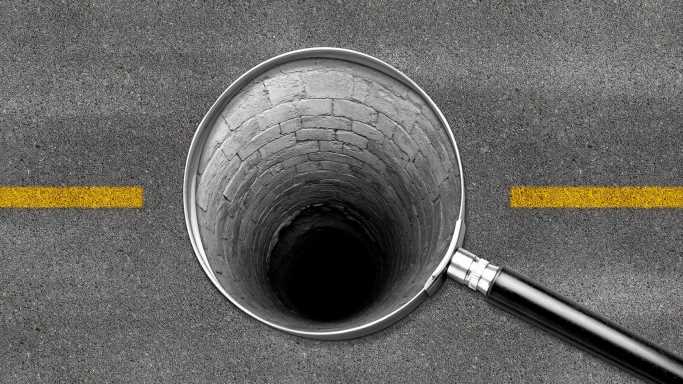
Illustration: Natalie Peeples/Axios
When a case of poliovirus was recently detected in New York, health department officials immediately had a tool at their disposal to check for disease transmission: wastewater collected for COVID sampling.
Why it matters: It's an example of a silver lining from the COVID-19 pandemic, augmenting the existing surveillance system for infectious diseases, including polio and monkeypox.
What they're saying: "COVID-19 was a paradigm shift in the way I thought about wastewater surveillance," said David Larsen, an environmental epidemiologist at Syracuse University, which was contracted by New York officials to expand wastewater surveillance to every county in the state.
- He told Axios hadn't really thought about using the tool beyond pathogens like norovirus to diseases transmitted via respiratory droplets like COVID or the flu.
- "It was a eureka moment," he said. "That's been a driving realization that 'Yeah, we need to have a system that improves our public health and needs to be operating continuously so we can respond."
- Virus levels in wastewater typically rise several days before an area sees an increase in clinical cases, providing a harbinger of disease spread.
- But since the sludge can't be used to pinpoint individual cases, it isn't viewed as a replacement for test-and-trace and other public health tools.
The big picture: While there was some level of wastewater surveillance before the pandemic, COVID supercharged it by prompting the creation of the National Wastewater Surveillance System.
- There were also a number of universities that banded together to create their own networks of wastewater testing such as the WastewaterSCAN, or Sewer Coronavirus Alert Network.
- The WastewaterSCAN initiative, co-led by Stanford researcher Ali Boehm, has found that detecting COVID in wastewater samples correlates very well to the number of cases increasing in the community and has expanded its work to other viruses like influenza A, respiratory syncytial virus (RSV) and now, monkeypox.
- "This system is set up for pandemic or outbreak response because it's easy to pivot and add an assay for a different target," Boehm told Axios.
- Additionally, it takes a broad sample size from a community, pointing public health agencies where to target communication, testing and outreach.
- "We're still really on the front end in terms of discovering the potential here," Heather Bischel, an assistant professor in civil and environmental engineering at the University of California Davis told NPR.
Be smart: Wastewater can tell public health officials three important pieces of information starting with whether or not a particular pathogen is detected, Larsen said.
- It can also tell investigators how intense transmission is through genetic sequencing. "Is it a single genetic strain, which would indicate very limited transmission, or is it 50 genetic strains?" Larsen said.
- And, in a best case scenario, wastewater surveillance can offer a bit of closure. "It's also a tool to confirm it's gone," Larsen said.
Yes, but: Wastewater sampling, while an effective new tool, is not perfect.
- The size of the sewershed that samples are drawn from matters.
- In Los Angeles County, monkeypox wasn't detected at first through the SCAN initiative, Boehm told Axios, even though there were confirmed cases.
- "The larger the sewershed, the more diluted the results will be," Boehm said.
Source: Read Full Article
